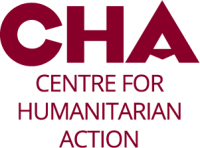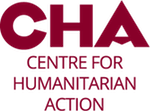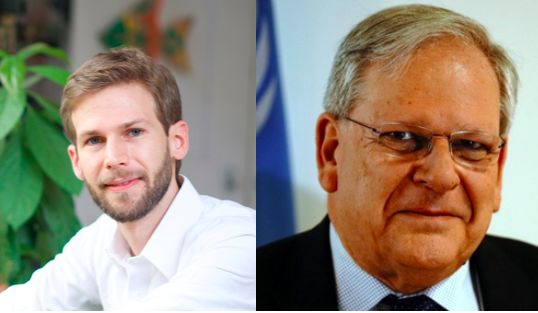| Author: | Florian Weigand and Mark Bowden |
| Date: | 19. October 2021 |
In November 2020, the international donor community at the Geneva pledging conference committed to support Afghanistan with US$3.3bn annually, in support of the Afghanistan National Peace and Development Framework, making the country one of the largest recipients of international development assistance. At the same time, the UN issued a humanitarian appeal to meet the challenges of increasing internal displacement and the food needs created by the start of the drought. The contributions to the humanitarian appeal were the lowest in years. Only around 50% of the required US$1.13bn was met by the donor community. A year later, following the Taliban’s capture of the Afghan state, most development contributions were frozen, and donors shifted their focus to the humanitarian sector, pledging US$1.1 billion in September 2021. These extreme shifts in the pattern of aid are the outcome of a series of mistaken planning assumptions by international donors that have left the remaining humanitarian community without the means and tools to address the crisis created by drought and economic collapse.
The international community made two major mistakes at the Geneva conference in 2020. The first was to base their planning assumptions and aid commitments on the optimistic assumption that there would be a negotiated political settlement that would bring the Taliban into a power sharing arrangement. This erroneous assumption was compounded by the lack of any engagement or dialogue with the Taliban on development and economic principles during the peace negotiations. The second mistake lay in not recognising the critical interdependence that existed between the delivery of humanitarian assistance and the provision of development assistance – specifically the linkages in health service delivery and the requirements of maintaining government infrastructure. The almost wholescale departure of the international donor and diplomatic community and the rapid takeover by the Taliban has left the UN and the remaining humanitarian organisations in the invidious position of having to develop effective humanitarian strategies that both reengage the donor community in critical financial infrastructure support to Afghanistan while also navigating a new set of relationships and a new political dynamic with evolving Taliban governance structures. This blog briefly explores three important challenges confronting the humanitarian community as they become a major conduit for foreign finance.
Humanitarian aid & the state
When the Taliban took control of Kabul on 15 August 2021, they captured a weak but highly centralised state. Over the past 20 years, the international community supported the construction of a state, in which decisions are made in the capital, not in the provinces. Within this state structure, former President Ashraf Ghani further tried centralising power in his office. The strong insistence of “on-budget” financing by Ghani led to a high dependence on the World Bank and the use of the Afghanistan Reconstruction Trust Fund (ARTF) as the mechanism for channelling money through the state so as to increase state legitimacy. In the case of key areas of service delivery, health, education as well as community development, the ARTF established new funding mechanisms which meant that the NGOs were contracted by government to deliver parts of an overall system of service delivery. This model was exemplified by the Sehatmandi programme for health provision and created new financial interdependencies between central government and NGOs. Humanitarian assistance has in the past only been used to meet emergency health and education needs and even the high levels of humanitarian aid that is now pledged will not meet the financing gap created by the withholding of World Bank funds. The inability to resolve this issue either by establishing new funding mechanisms or releasing the World Bank funds within the next two months will not only exacerbate the humanitarian crisis but hasten the collapse of the systems of social protection required by the Afghan people.
The donor community’s reaction to the rapid collapse of the Ghani government has been to limit support to humanitarian assistance on the grounds that this would be politically acceptable to their domestic constituencies and would be seen as independent of the Taliban authorities. The current realities show that this is not the case. Alongside the financial interdependence between the state and NGOs, past statebuilding efforts also ensure that humanitarian assistance in Afghanistan today, under a Taliban government, cannot be provided independently of the state. This is operationally difficult as the Taliban have monopolised force to a large extent and have inherited the tighter regulations established by the Ghani government on visas, registrations and other permits that NGOs require. (An early Taliban action was to reestablish the office managing NGO registrations in the Ministry of the Economy). Furthermore, the interdependence between the state and NGOs extends into many other areas, one of the most important of which is the issue of security. The state provides the security and protection from crime that NGOs need in order to be able to operate. The Taliban-controlled state is certainly creating considerable challenges as it appears to be unwilling to make much compromise or to respond to aid conditionalities. Nonetheless, an effective response to the current crisis in Afghanistan needs the international donor community to go beyond its current narrowly focussed approach on humanitarian aid only. It needs to urgently find means by which the core functions of the state and sustainable systems of public services can be supported.
Engaging with a Taliban-controlled state
Meanwhile, it remains unclear how to best engage with the Taliban-controlled state as there is a tension between the centralised state structures that the Taliban captured and the more decentralised old governance structures of the Taliban. As an insurgency, the Taliban had established a parallel governance structure in the areas under their control, including shadow governors and commissions on different subjects. While the structures to some extent mirrored those of the Afghan state, policies were developed in a much more decentralised way. It remains to be seen to what extent the Taliban will adopt the more centralised model of governance of the state and how the formal state structures that are now under Taliban control and the Taliban’s own governance structures will relate to each other. Furthermore, it remains unclear how decisions will be made, how policies will be developed and how much space the Taliban will maintain for variation and deviation from the norm on the sub-national level in the future. In the recent past, the Taliban military structures dominated the movement. We now need to observe how the relationship between civilian and military structures of the Taliban will develop as they transition from ending the fight as an insurgent movement to attempting to consolidate control of the state.
The uncertainty arising from the Taliban’s political and military evolution brings with it challenges for engagement with the Taliban. This is particularly the case for many NGOs whose experience is primarily based on their previous engagement at the local level. Tensions can arise between negotiations and agreements made with the Taliban on the district or provincial level and those made on the national level. There are also difficulties in identifying the right people for the right conversation on thematic issues and with whom and on what level to discuss crucial issues such women’s rights. Consequently, NGOs may face difficulties when engaging with Taliban military commanders, for instance, not knowing how to prioritise access questions or women’s rights. In addition, it appears that uncertainty over boundaries and means of engagement has limited the international community’s collective bargaining power as donors and NGOs remain divided over priorities and strategies.
Humanitarian aid, levies and rent-seeking
A final challenge is that aid is a key source of revenue and rent for authorities in Afghanistan. More than 70% of the Afghan government’s budget was covered by international aid, a dependency which will remain substantial even if the expenses of the new Taliban government are lower than for the previous government due to the reduction in conflict. In the absence of development aid and a tumbling economy that reduces the Taliban’s ability to generate revenue through other fees, access to humanitarian aid is becoming more important. Already as an insurgency, the Taliban had established a far-reaching system to generate revenue through levies and taxes, including on trade and transportation of goods, customs, construction, mining – as well as aid.
It remains to be seen how the Taliban proceed and if they attempt to seek further taxation of humanitarian aid to finance the movement and the state. In the absence of any demobilisation, the Taliban will need to pay for their fighters and the existing Taliban civilian structures as well as meet their increasing expectations of reward. At the same time, they must face the challenge of financing an entire state, including the health centres and schools that used to be covered through development aid to the Afghan state.
There is also the danger that humanitarian aid as the major conduit for foreign finance, becomes subject to the Taliban’s internal politics and power dynamics, including rent-seeking. Government officials in Afghanistan frequently benefitted from corruption, for instance, in the context of payment of salaries for the police. The Taliban built local legitimacy by portraying themselves as fighters against the wide-spread corruption, which also affected civilians on a day-to-day basis when engaging with courts, security forces and government offices. But being in control of the state, the Taliban are likely going to face challenges and pressures similar to those of the previous government. Anecdotal evidence from Kabul suggests that much of the reported current infighting within the Taliban is not about policies, but about control of rents, including the revenues generated through border crossings, taxation of compounds and aid.
Conclusions
Following 20 years of international statebuilding efforts in Afghanistan, a strong interdependence between the Afghan state and the humanitarian sector has developed in the country. Humanitarian assistance alone is not going to be sufficient to address the extensive challenges that the people of Afghanistan are facing now. While temporary solutions may be found to ensure the continuation of some public services; most crucially health and education, there is a need to move beyond stop-gap approaches. Engaging with the Taliban-controlled state might be uncomfortable for many donors and certainly is challenging, but nonetheless the international donor community needs to find lasting solutions instead of putting the burden on the humanitarian community. Without such long-term solutions, the state and fragile systems of service delivery in Afghanistan may collapse, increasing the suffering of the Afghan population and making it even more challenging for the humanitarian community to provide assistance.
Mark Bowden was the UN Humanitarian Coordinator for Afghanistan (2012-2017) and remains extensively engaged with NGOs and civil society. He is a Senior Research Associate with the Humanitarian Policy Group at ODI.
Florian Weigand is the Co-director of the Centre for the Study of Armed Groups at ODI and a Research Associate at the London School of Economics.


